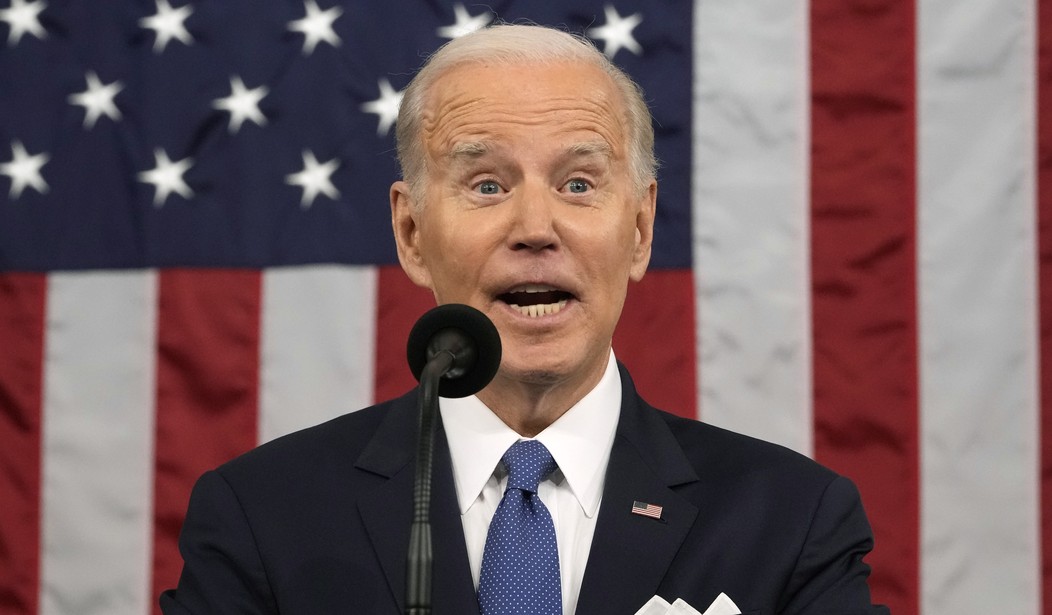Remember what Joe Biden claimed about inflation in his State of the Union address?
But here at home, inflation is coming down. Here at home, gas prices are down $1.50 from their peak. Food inflation is coming down — not fast enough, but coming down. Inflation has fallen every month for the last six months, while take-home pay has gone up.
Wrong. Not only was Biden wrong about take-home pay in relation to inflation, he was also wrong about inflation itself. The rate of inflation may have dipped a bit over the last quarter of 2022, but it’s beginning to roar back again. Today, the BEA announced that the Federal Reserve’s key indicator of inflation has hit its highest level in three months, and demand is again soaring:
Personal income increased $131.1 billion (0.6 percent) in January, according to estimates released today by the Bureau of Economic Analysis (tables 3 and 5). Disposable personal income (DPI) increased $387.4 billion (2.0 percent) and personal consumption expenditures (PCE) increased $312.5 billion (1.8 percent).
The PCE price index increased 0.6 percent in January. Excluding food and energy, the PCE price index also increased 0.6 percent (table 9). Real DPI increased 1.4 percent and Real PCE increased 1.1 percent; goods increased 2.2 percent and services increased 0.6 percent (tables 5 and 7).
About the only good news in this report is that the raise in personal income in January kept pace with the PCE price inflation, meaning a wash in buying power. Overall, however, this signals that inflation rates are rising again even from their currently far-too-high levels, three times or more higher than the Fed’s 2% target rate.
CNBC’s Jeff Cox notes the miss on expectations:
A measure the Federal Reserve watches closely to gauge inflation rose more than expected in January, indicating the central bank has more work to do to bring down prices. …
All of the numbers suggest inflation accelerated to start the new year, putting the Fed in a position where it likely will continue to raise interest rates. The central bank has pushed benchmark rates up by 4.5 percentage points since March 2022 as inflation hit its highest level in some 41 years.
The Fed follows the PCE measures more closely than it does some of the other inflation metrics because the index adjusts for consumer spending habits, such as substituting lower-priced goods for more expensive ones. That provides a more accurate view of the cost of living.
Policymakers tend to focus more on core inflation as they believe it provides a better long-run view of inflation, though the Fed officially tracks headline PCE.
The core PCE index rate may be worse in that regard. Not only is it also at 0.6%, it hit the highest reading in at least six months. That indicates a broad-based acceleration of price hikes, not just tied to a short-term disruption on energy or food.
Investors see what’s coming from the Fed as a result of rebounding inflation:
U.S. stock futures fell sharply Friday after the Federal Reserve’s preferred inflation gauge showed a stronger-than-expected increase in prices last month.
Dow Jones Industrial Average futures fell by 366 points, or 1.6%. S&P 500 and Nasdaq-100 futures slid 1.2% and 1.7%, respectively. …
“We’re still looking down the barrel of a gun that has not come to grips with what the consumer may or may not have strength for for the rest of the year, and what earnings are going to do for the rest of the year. And I think the equity market is being overly optimistic,” SoFi’s Liz Young said Thursday on CNBC’s “Halftime Report.”
Jerome Powell had signaled that the Fed would continue to raise interest rates for most of this year, but at a slower pace than in 2021 and 2022. That may not be enough, especially when the acceleration appears to be across the board. Demand remains stubbornly high, despite rapid hikes to the prime interest rate. The fact that wage increases are beginning to keep pace with inflation may be good for workers but it signals a potential wage-price spiral that the Fed will do anything to avoid or stop.
The only way for the Fed to accomplish that is a series of shocks to the price of money, and that makes a recession much more likely. As this data shows, and as Wall Street clearly sees, it may be the only way out of a worse economic situation as long as the Biden administration continues to eschew supply-side policies, especially on energy.








Join the conversation as a VIP Member